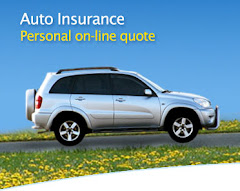Easy Ways To Avoid Auto Accidents
 It’s no accident that numerous motorists avoid collisions by applying basic safety principles on America’s roadways. First of all, insurance industry spokeswoman Heather Ryndak urges drivers to buckle up, drive defensively, obey the rules of the road, and be courteous behind the wheel.
It’s no accident that numerous motorists avoid collisions by applying basic safety principles on America’s roadways. First of all, insurance industry spokeswoman Heather Ryndak urges drivers to buckle up, drive defensively, obey the rules of the road, and be courteous behind the wheel. Auto accident prevention is a deadly serious matter to Ryndak who cited disquieting statistics proffered by the National Highway Traffic Safety Administration (NHTSA), in Washington, D.C. The NHTSA reports that driving distractions are to blame for about 4,300 crashes every day on U.S. roads. “Driving safely is a matter of personal responsibility,” contends Ryndak, spokeswoman for the Property Casualty Insurers Association of America (PCI), in Des Plaines, Ill.
Ryndak advises motorists to take various “steps to prevent distractions from affecting their driving performance,” and her PCI colleague, Dan Kummer offered specifics. “Topping our list is don’t drink and drive,” points out Kummer, PCI director of auto insurance. “One-third of all auto accidents are related to drunken driving.” There are a number of driver distractions to avoid when driving, says Kummer.
Motorists can minimize distractions by: pulling over to a safe place to …
- Dial numbers and talk on cell phones
- Pick up items from floormats
- Change radio stations
- Change CDs
- Look at a map or read newspapers
- Take care of personal needs such as eating or personal grooming
“Dialing a phone number or checking your voice mail requires you to punch in codes or numbers, and that’ll draw your attention away from the roadway,” says Tully Lehman, spokesman of the Insurance Information Network of California.
Kummer calls on motorists to avoid aggressive driving. “Don’t escalate a potentially dangerous situation by angrily gesturing at a motorist who cuts you off on the freeway. If such a situation is escalating, don’t take matters into your own hands, call the police.”
Motorists should exercise courtesy when driving to avoid problems on the roadways. Adds Kummer: “It seems as if courtesy is something of a lost art. If someone sees you use your turn signal before changing lanes, they often speed up to cut you off. Let them pass; don’t try to force your way in. Many accidents occur because of aggressive driving.”
If you’re in an accident, Kummer suggests that you “pull over to the side of the road, exit your vehicle and exchange insurance information behind roadway safety railings.”
Kummer urges motorists to keep a safe distance between your car and the vehicle ahead of you in your lane. “As a general rule of thumb, there should be a separation of at least one car length for every 10 miles an hour you are driving.”
Lastly, Lehman offers another simple but effective driver safety recommendation. “Slow down in foul weather. In rain or snow, you should give yourself more distance for braking in case traffic comes to an abrupt halt.”
10 Tips for Avoiding Auto Accidents
- Avoid drinking and driving.
- Minimize distractions such as reading newspapers or talking on the cell phone when driving.
- Properly maintain vehicles. Tune up cars according to maintenance schedule, and especially take note monthly of tire condition.
- Do not encourage aggressive drivers. Let other aggressive driving behavior roll off your back, or call the police. Losing your temper could worsen the situation.
- Leave a safe distance between your cars and others. For every 10 miles per hour of speed, leave at least one car length space between your vehicle and the vehicle ahead.
- Maintain a constant speed. Don’t continually slow down or speed up.
- Adjust mirrors properly and check the side and rear-view mirrors every 15 seconds.
- Take defensive driving classes to improve your ability to drive and be better prepared for the unpredictable behavior of other motorists.
- Proceed with great caution through intersections. Intersections are the center of most accidents. When entering an intersection, look left, then right, then left again to ensure the area is clear.
- Be sufficiently aware of road conditions and be more visible. Keep your lights on at dusk and dawn and during rain, as is the law in most states. Understand basic vehicle dynamics, such as knowing how to recover from a skid.
Source: Property Casualty Insurers Association of America (PCI), in Des Plaines, Ill.



No comments:
Post a Comment